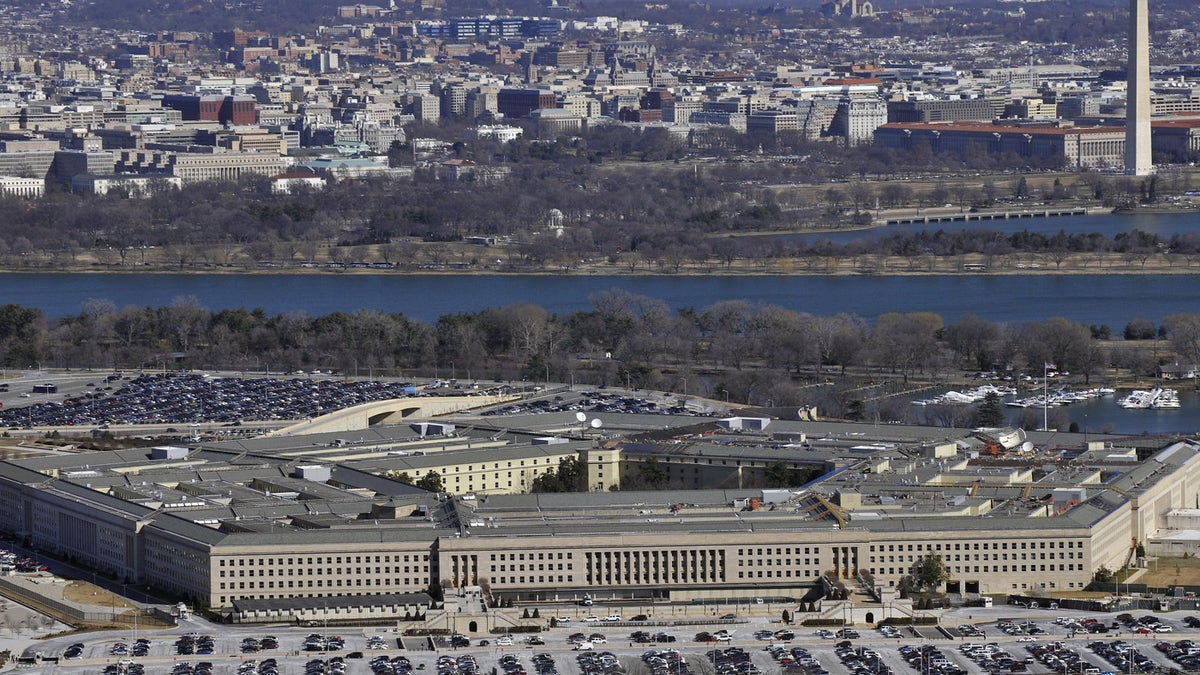
Image of the Pentagon by Senior Airman Perry Aston
Nuclear weapons, Research and Development, space war, attack submarines, drones and AI are all massive areas of priority for Pentagon weapons developers as they seek to accelerate its growing “pivot” to major-power warfare, seeks to address deficits and - perhaps of greatest significance - stay ahead of Russia and China when it comes to weapons areas of great concern to the US military services.
The more than 700-billion Pentagon 2020 proposed budget naturally covers a wide-ranging sphere of technologies and weapons programs, yet there are a handful of technologies and platforms slated for significant spending increases when compared with recent years. These areas, it goes without saying offer relevant and timely insight into the current threat environment and DoD priorities addressing an emerging new strategic landscape.
Taking a close look at where the increases are, the two largest ones in the 2020 submission appear to be $14 billion proposed for the new Space Force and an overall 10-percent increase in Research and Development spending. Large increases are also slated for AI, the Pentagon’s arsenal of nuclear weapons, more attack submarines, an accelerated Navy fleet-size expansion and a host of Air Force programs to include hypersonic weapons and the new stealthy B-21 bomber.
PENTAGON WANTS SMALL-DIAMETER BOMBS AND HELLFIRE MISSILES FOR FUTURE WAR
AI is, arguably, among the most wide-spread or encompassing areas of major emphasis. Not only has the Pentagon recently unveiled a new AI strategy, but AI, in general, has been expanding well beyond IT and more narrowly configured elements of the cyber domain to include large platforms across the services. New iterations of AI are now being woven into things like the F-35, current and future armored combat vehicles and Navy ships such as the LCS and new Ford-class carriers. Cybersecurity, senior Air Force leaders explain, is by no means restricted to IT. Rather, large networks, fire control, radar, weapons, sensors and command and control networks are increasingly cyber-reliant and informed by AI.
Overall, it is important to note that areas of proposed increases do not instantly or completely suggest that these are the most important programs - yet they do indicate significant areas of growing Pentagon emphasis as it strives to stay ahead of major power rivals -- an increasingly complex and serious challenge.
It’s no surprise that, broadly speaking, the Pentagon is placing a much-accelerated measure of importance upon Research and Development by asking for a nearly 10-percent increase in spending. Upon initial examination, there are naturally some self-evident or more obvious reasons for this, given the pace of global technological advancement and the commensurate need for newer technologies. These include an ambitious DoD-wide migration to cloud platforms, new AI strategy, Nuclear Posture Review and of course fast-paced preparations for Space War. Much progress has been made when it comes to implementing Acting Defense Secretary Shanahan’s directive to migrate quickly to cloud technologies, a move directed in a widely-circulated memo several years ago when he served as the Deputy Secretary of Defense. DoD is also progressing with a widespread move to Windows 10. Innovations related to cybersecurity are increasingly AI-based as well. The 2020 budget proposes $9.6 billion for Cyber war.
Research & Development, much of which is now fortified by fast-evolving trends in AI, is heavily focused on drones and manned-unmanned teaming. F-22s and F-35s will, for instance, will soon control nearby “loyal wingman” drones from the cockpit -- and planes will launch and recover small and medium-sized attack drones from the air. The budget proposes $3.7 billion for Unmanned/Autonomous projects and $927 million for its emerging Joint Artificial Intelligence Center. R&D increases also increase development for laser weapons and research, asking for $235 million.
WHY THE US 2020 BUDGET MASSIVELY PUSHES HYPERSONIC WEAPONS
Other proposed increases, as well, appear to have a pretty straight forward reason. The Air Force B-21, for instance, is getting a roughly $700 million boost in funding; the program recently completed its Critical Design Review and is moving toward a new prototyping and construction phase. There is also broad consensus that a new generation of stealth is needed to stay in front of advanced, Russian-built air defenses.
The much-discussed Nuclear Posture Review introduces a handful of ambitious plans to expand the US nuclear arsenal. This of course included continued rapid progress on existing nuclear weapons programs such as the new Ground-Based Strategic Deterrent next-generation ICBM and progress with an emerging nuclear-armed Long Range Standoff weapon.
Concurrently, the NPR calls specifically for the addition of new, low-yield submarine-launched ballistic missile (SLBM) and nuclear cruise missile to introduce an option to launch more pinpointed nuclear strikes if need be. Pentagon weapons developers tell Warrior Maven the early draft plans for this weapon have been completed and that the next steps are underway. The reason for these new weapons, Pentagon developers say, is not to lower the threshold to nuclear war but rather strengthen a deterrence posture.
Other interesting areas of the 2020 budget include Hellfire Missiles, lasers, Hypersonic Weapons and aircraft carriers.




















